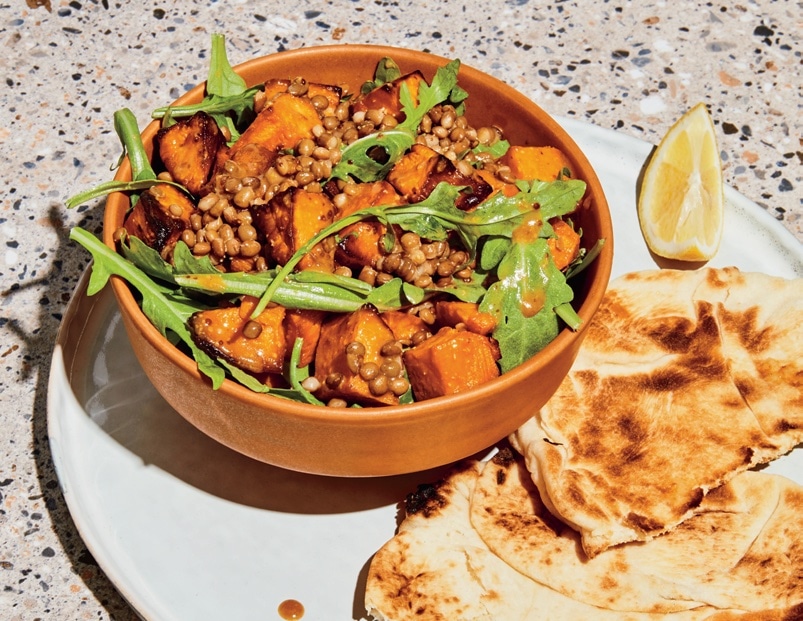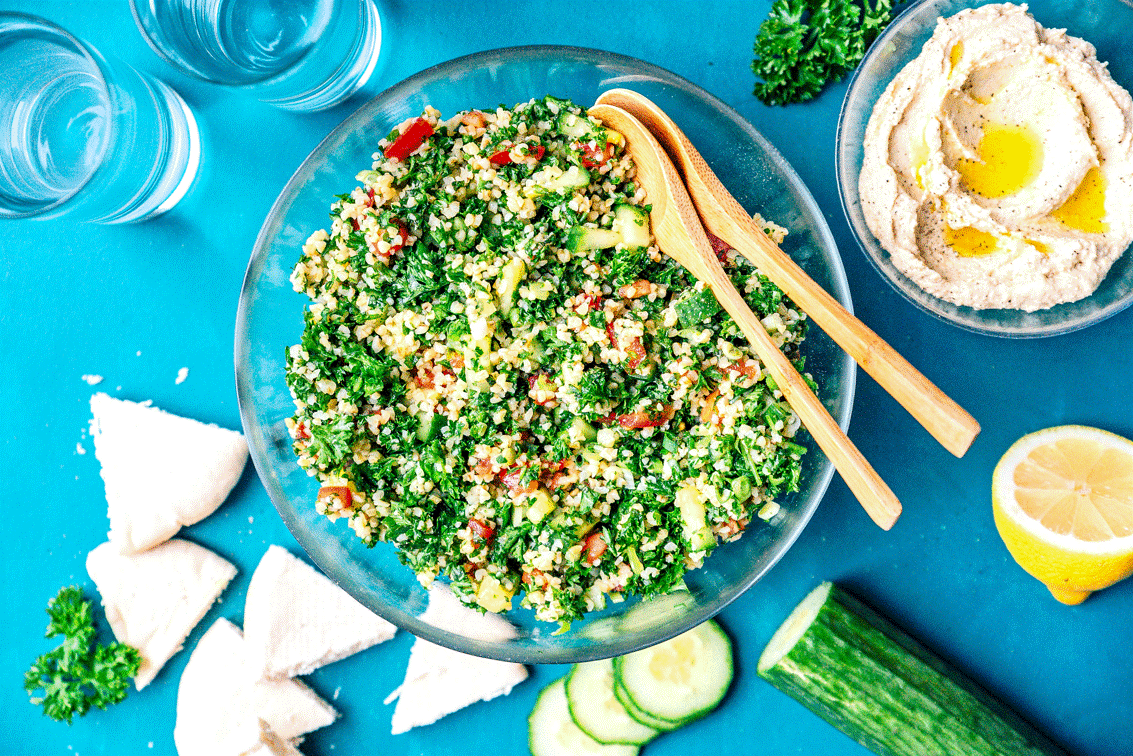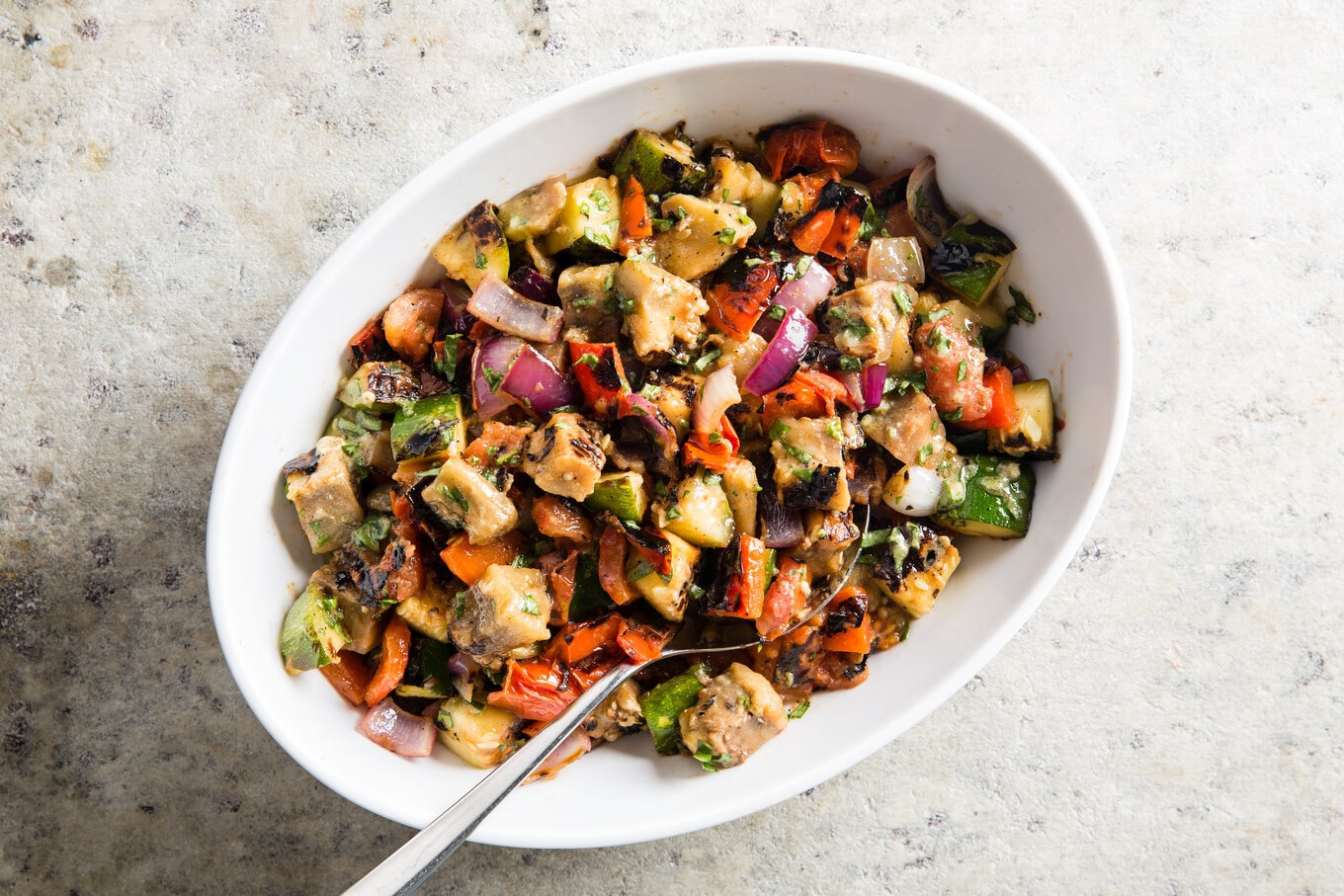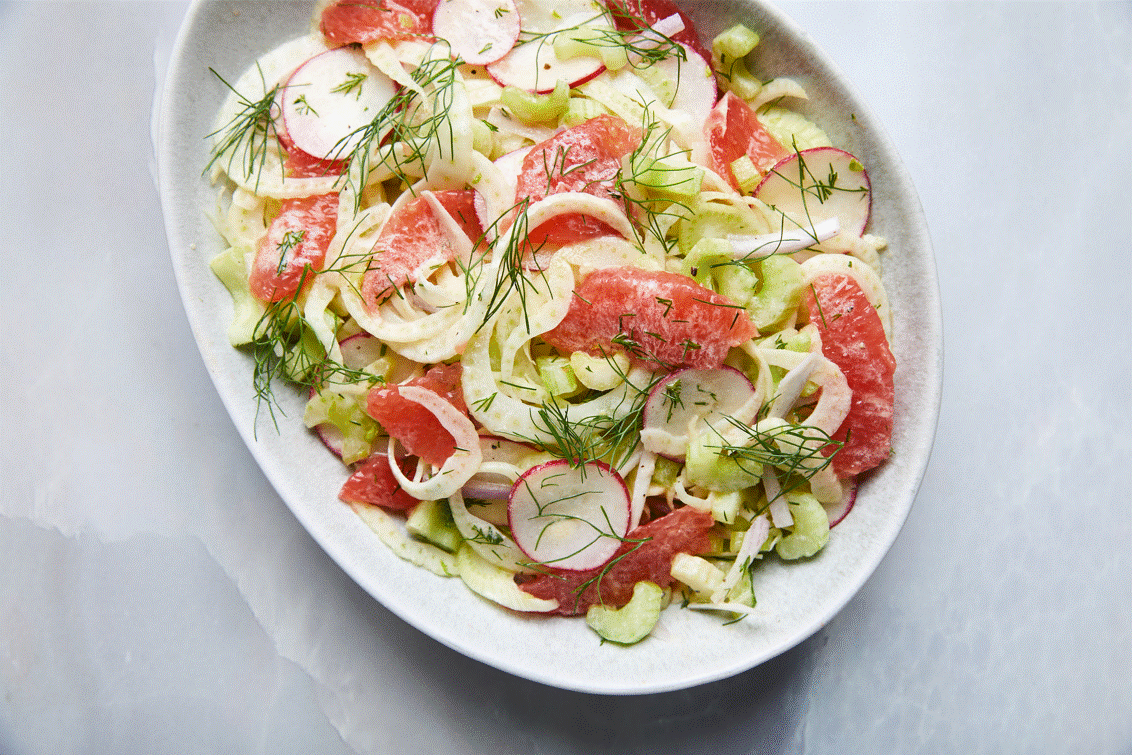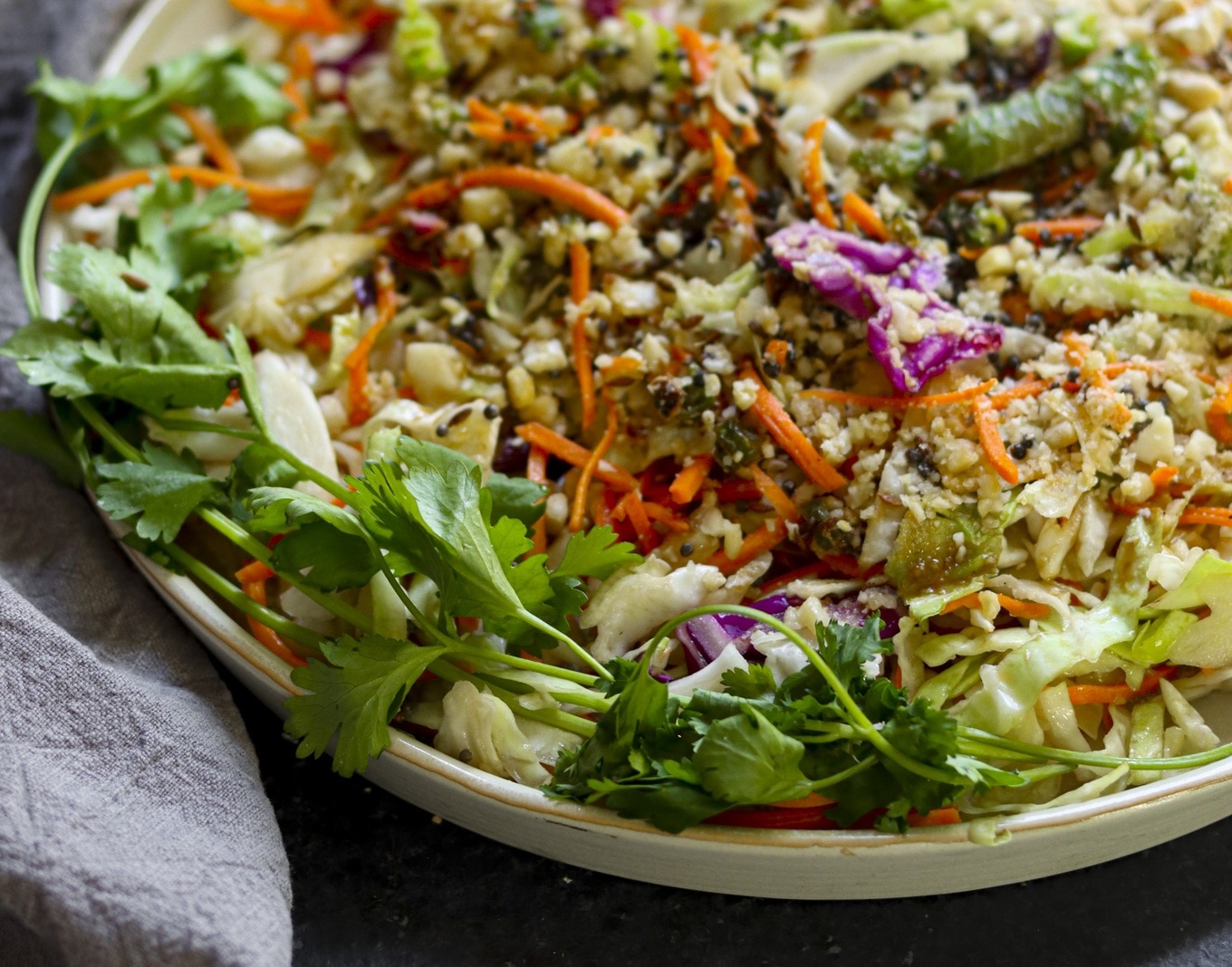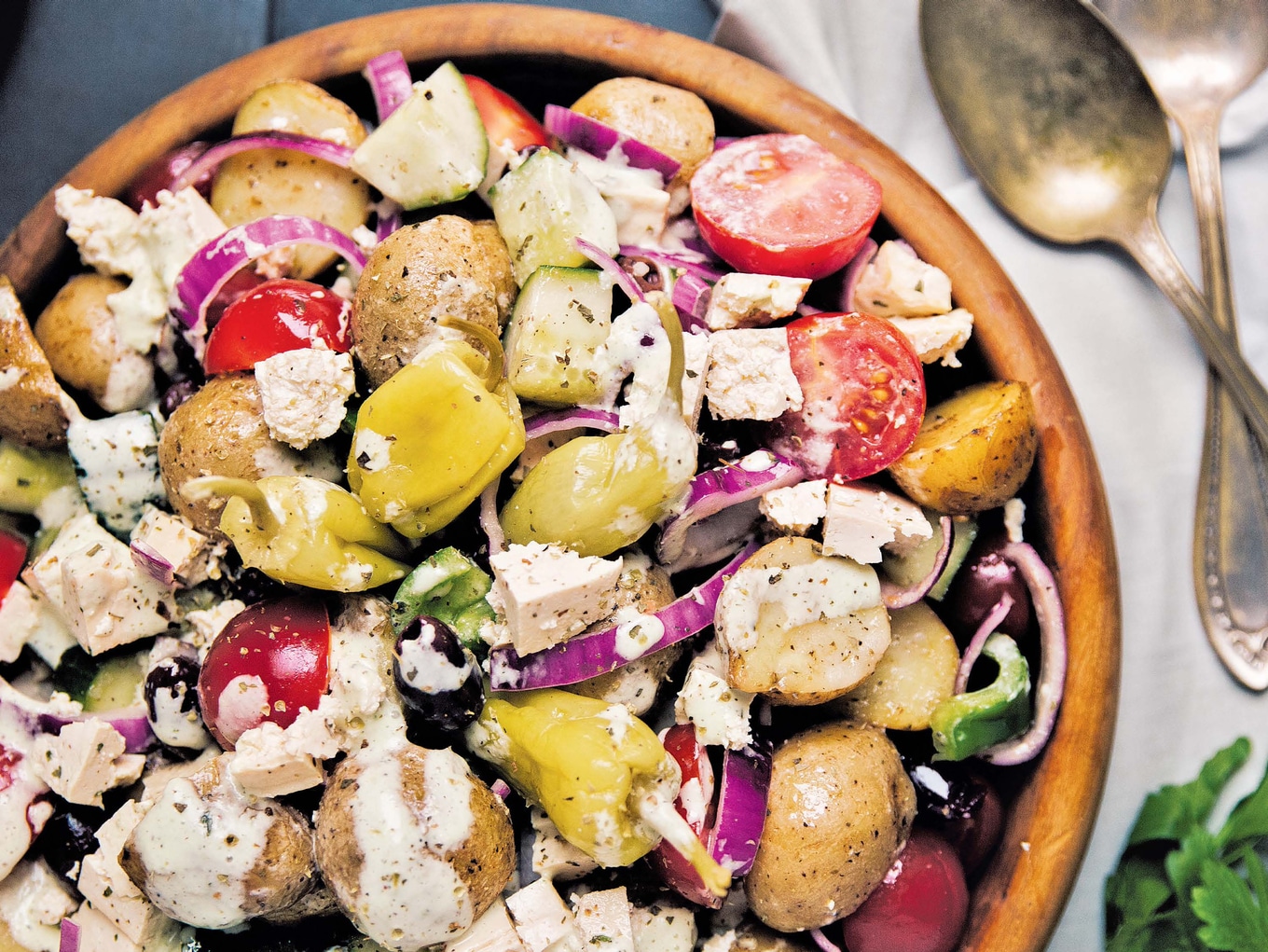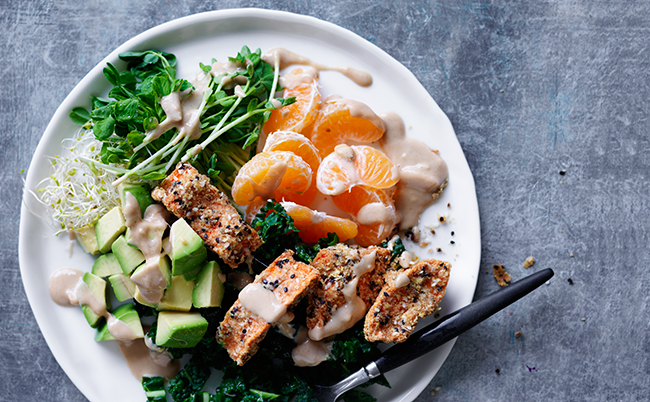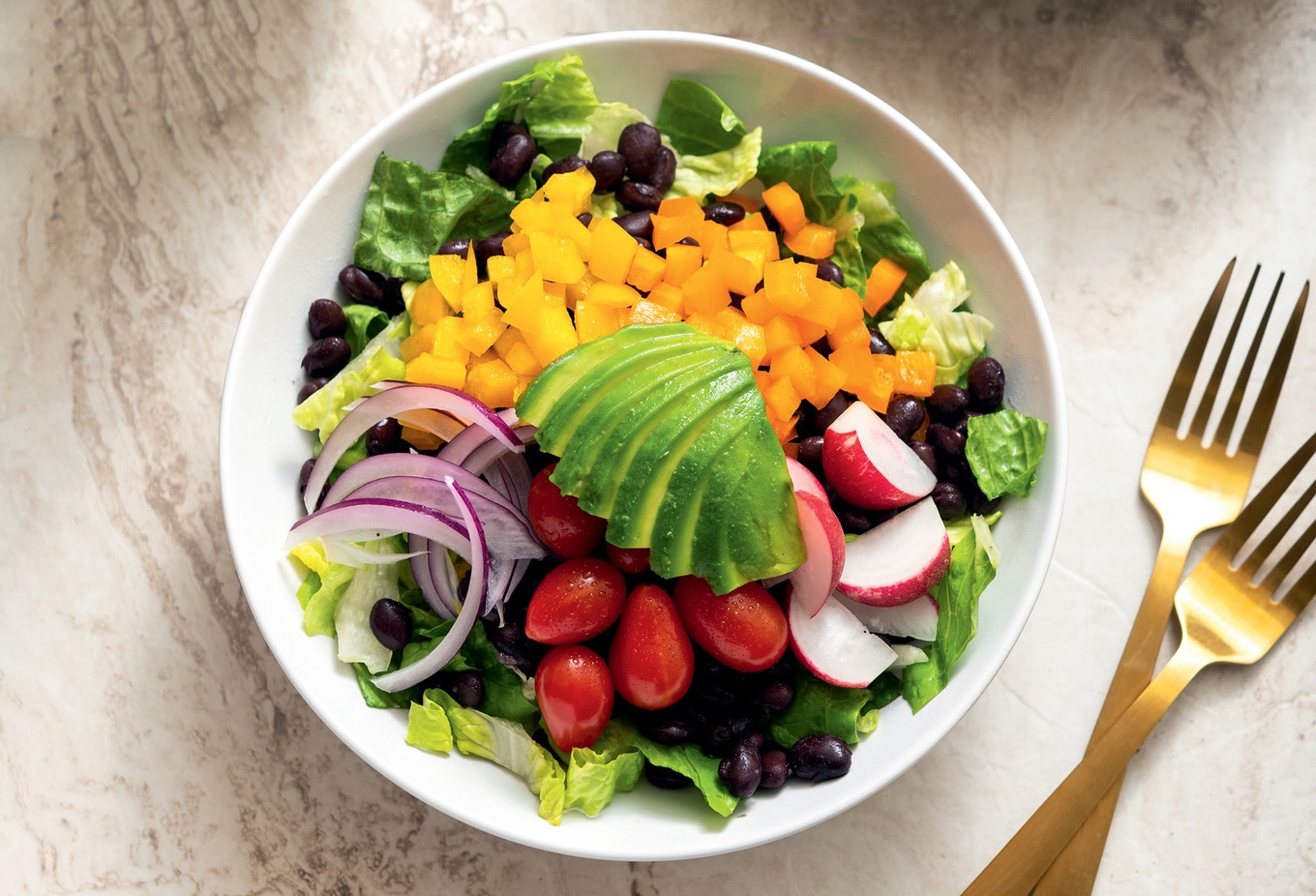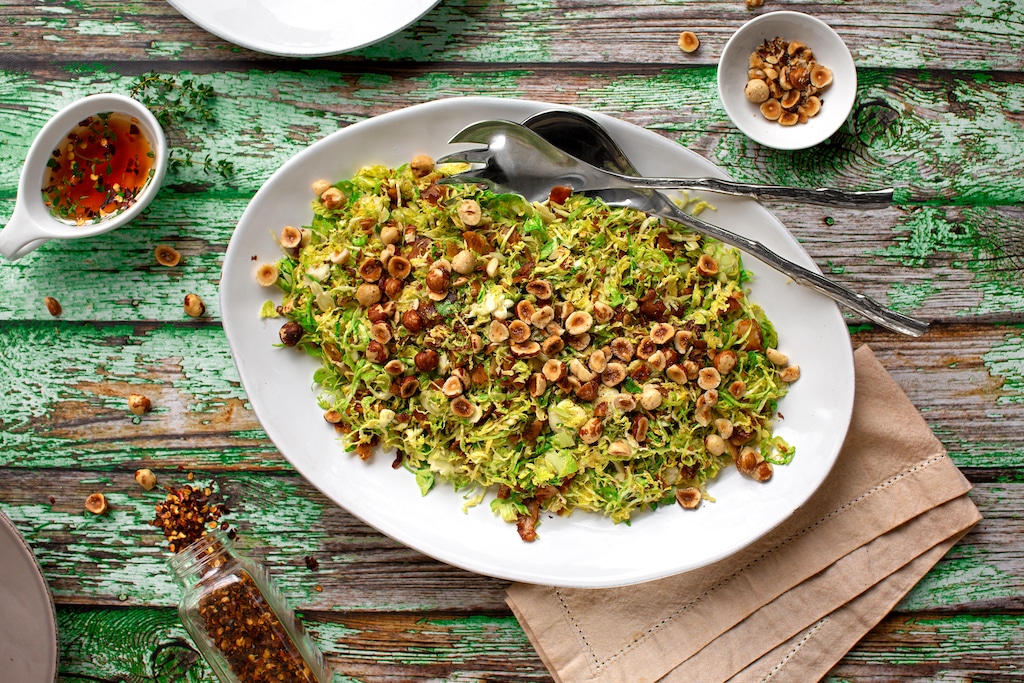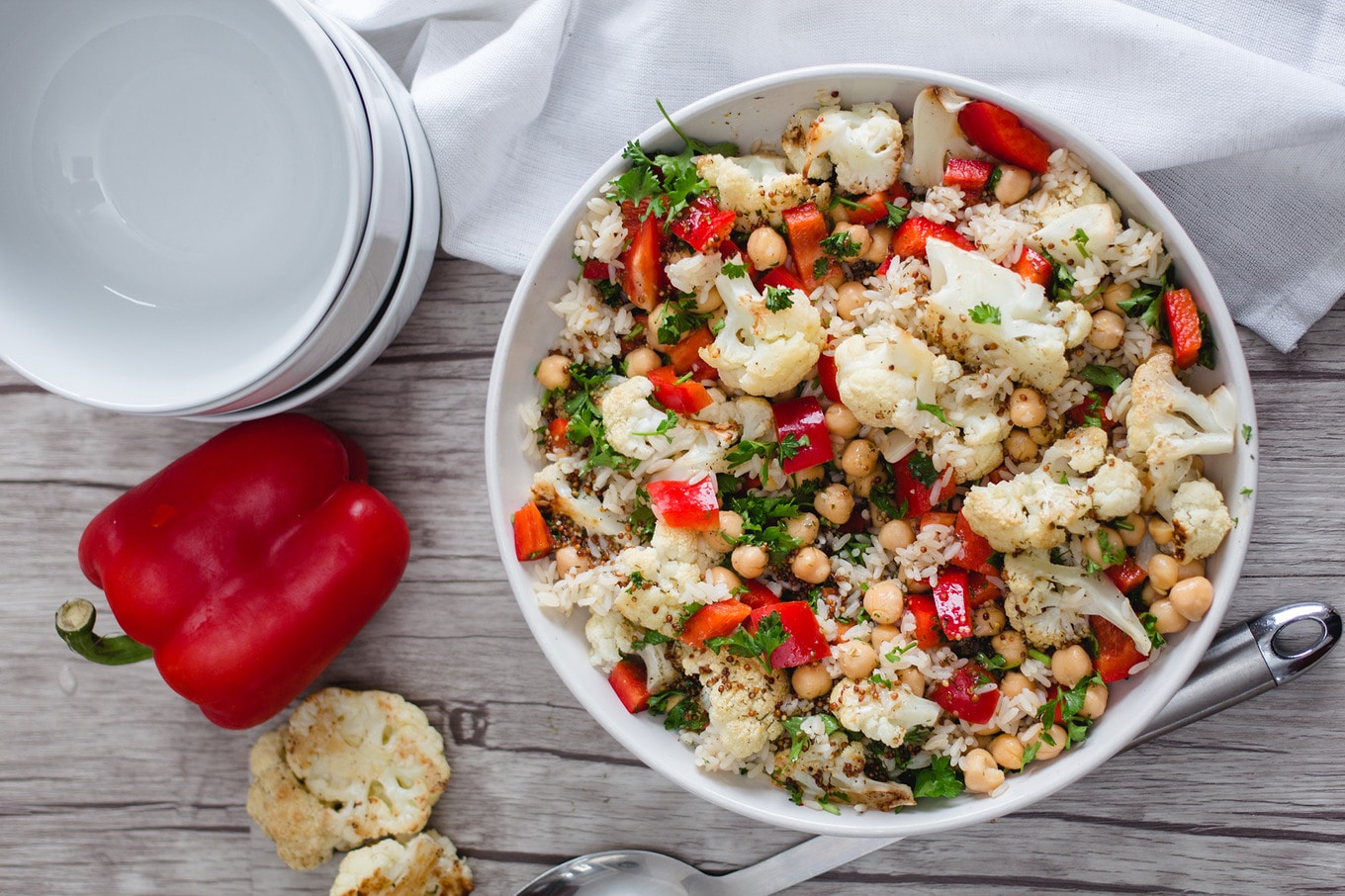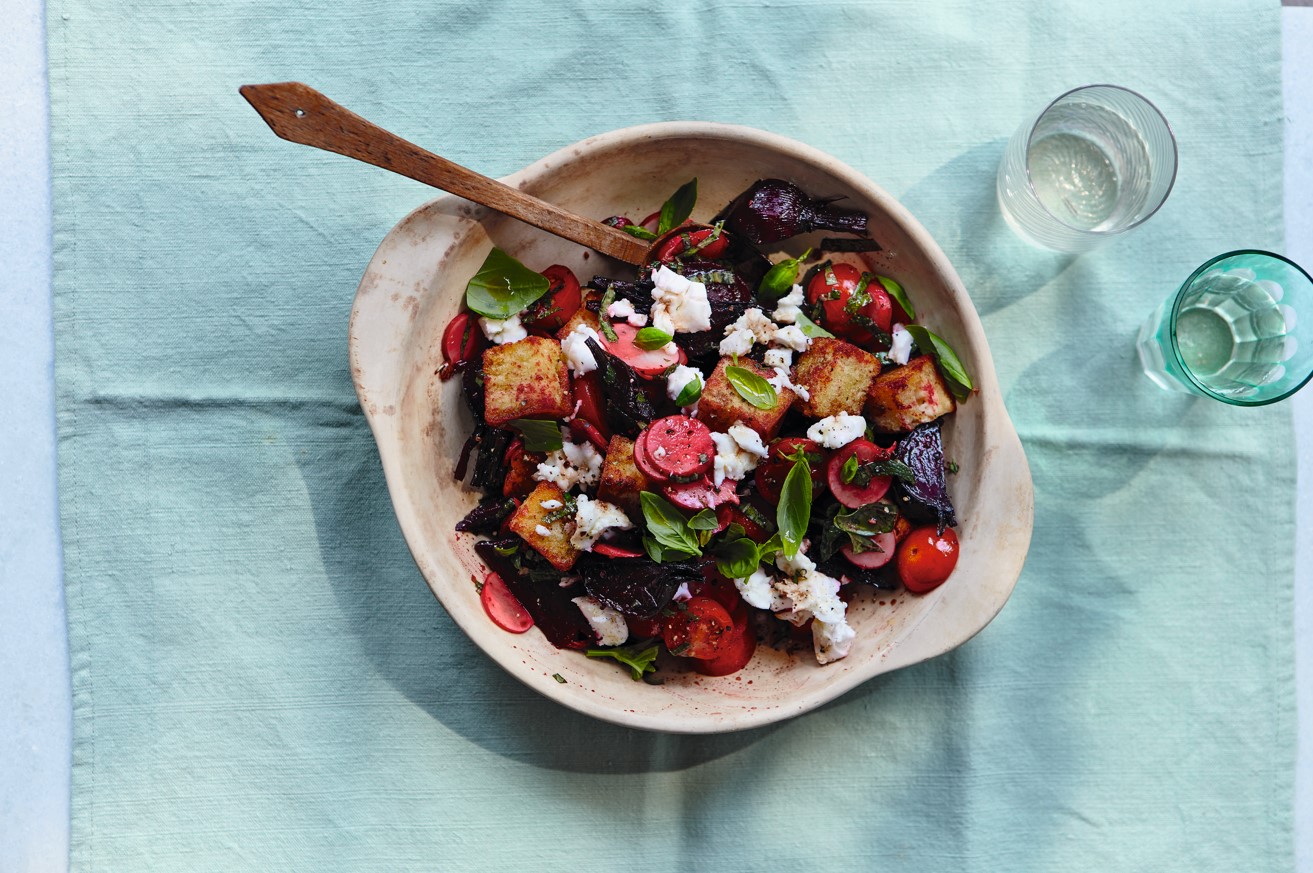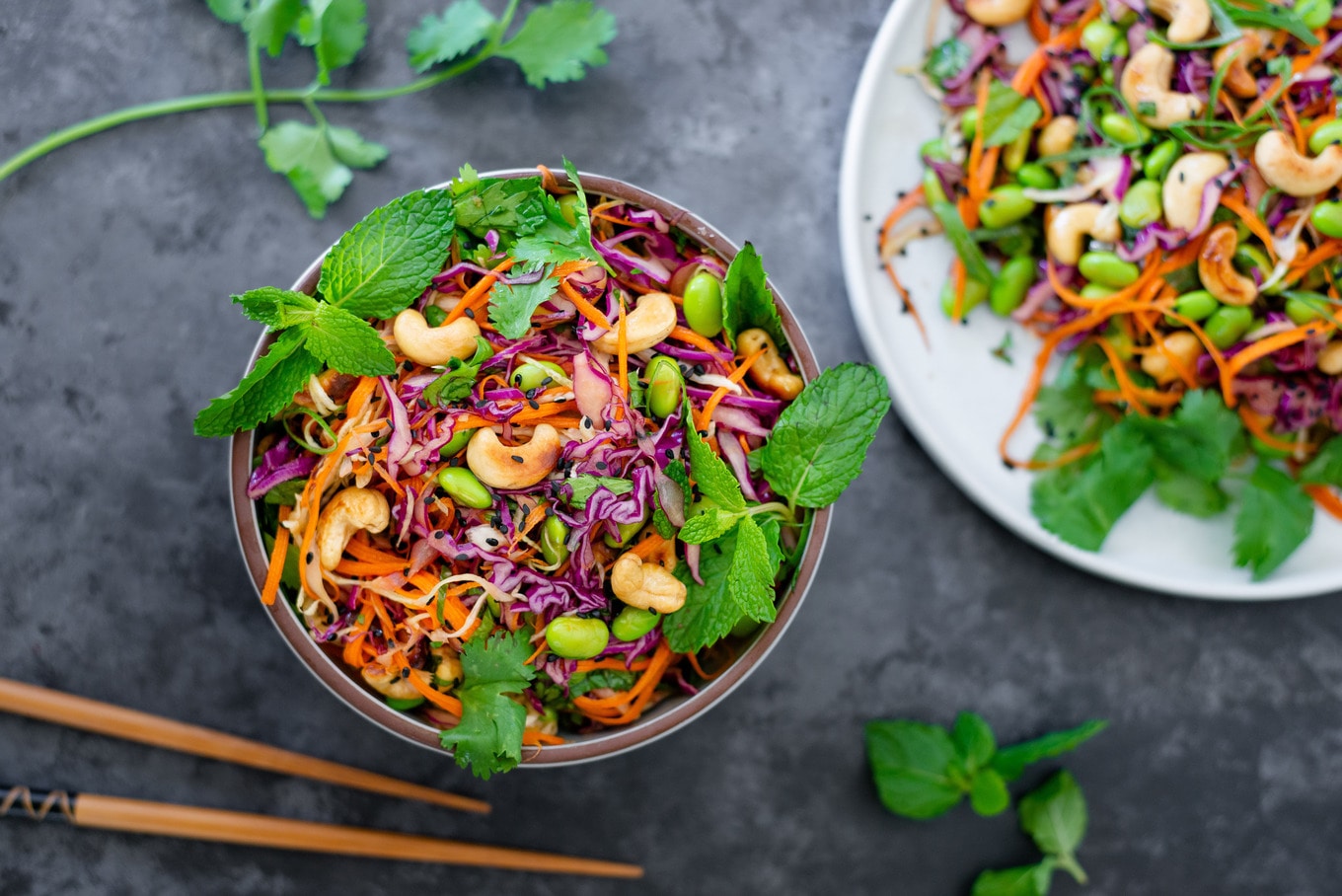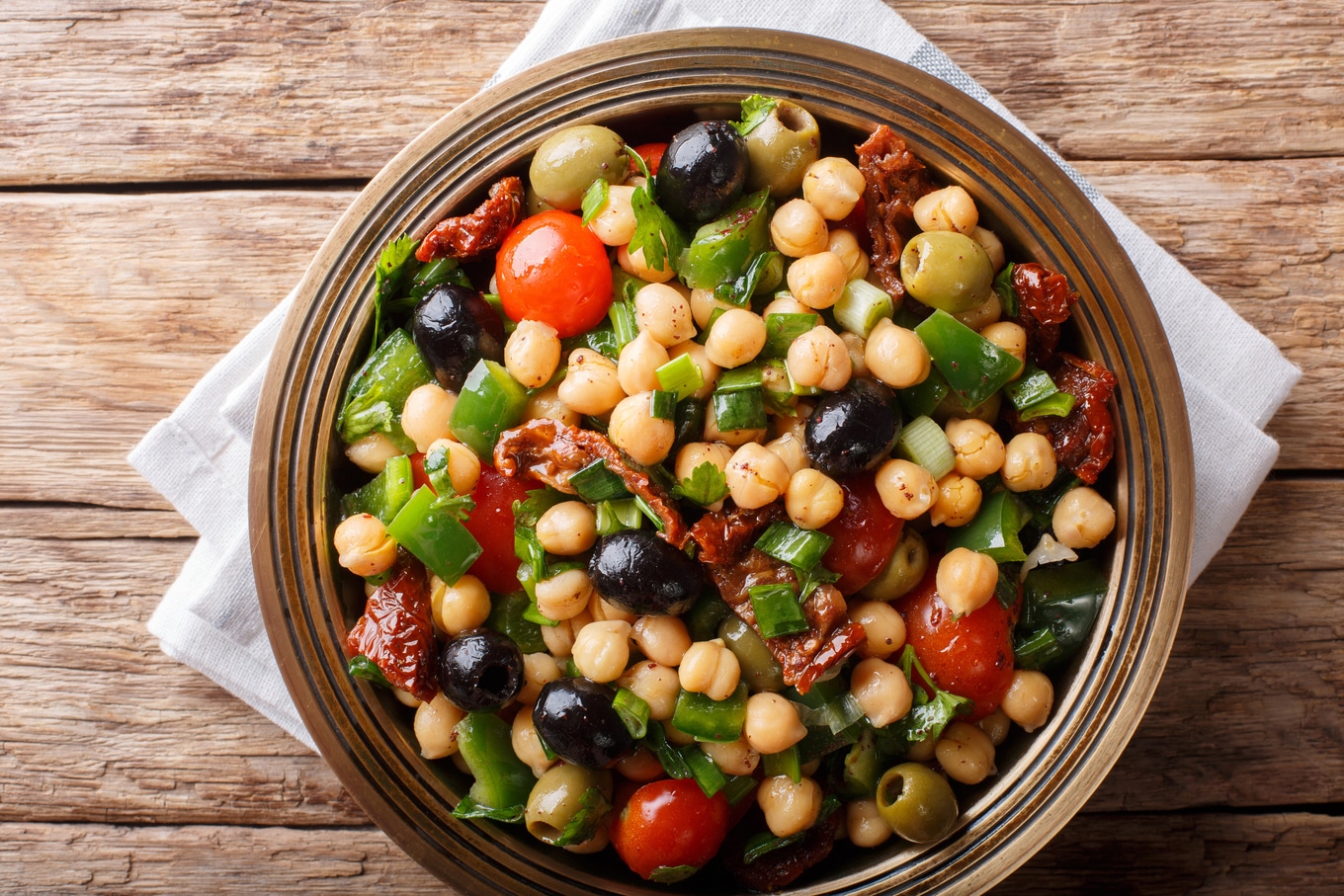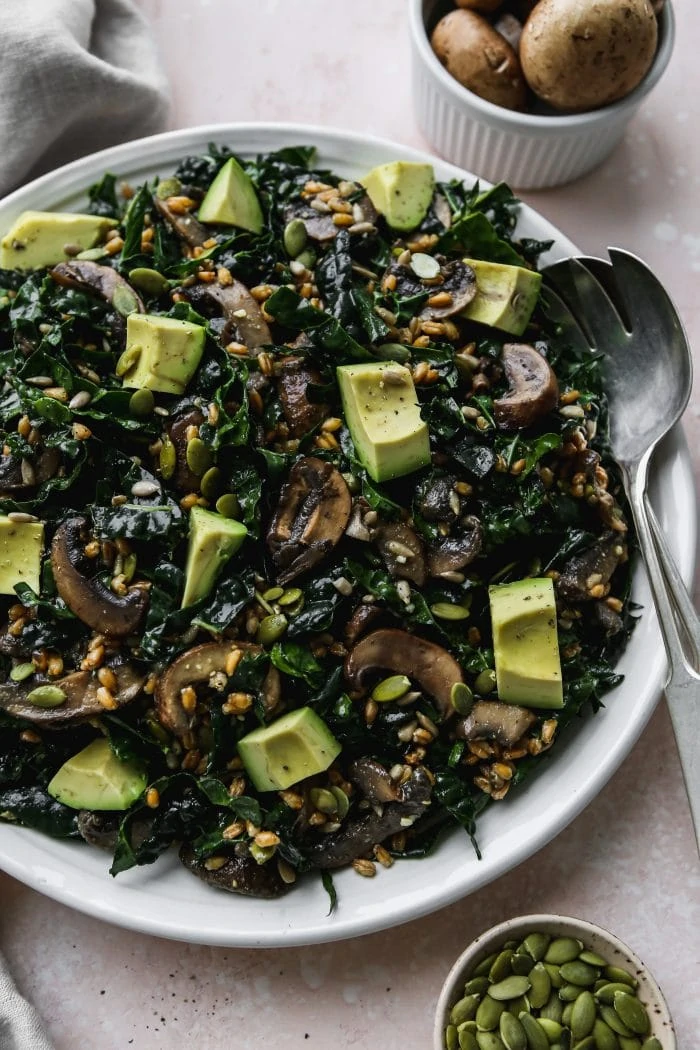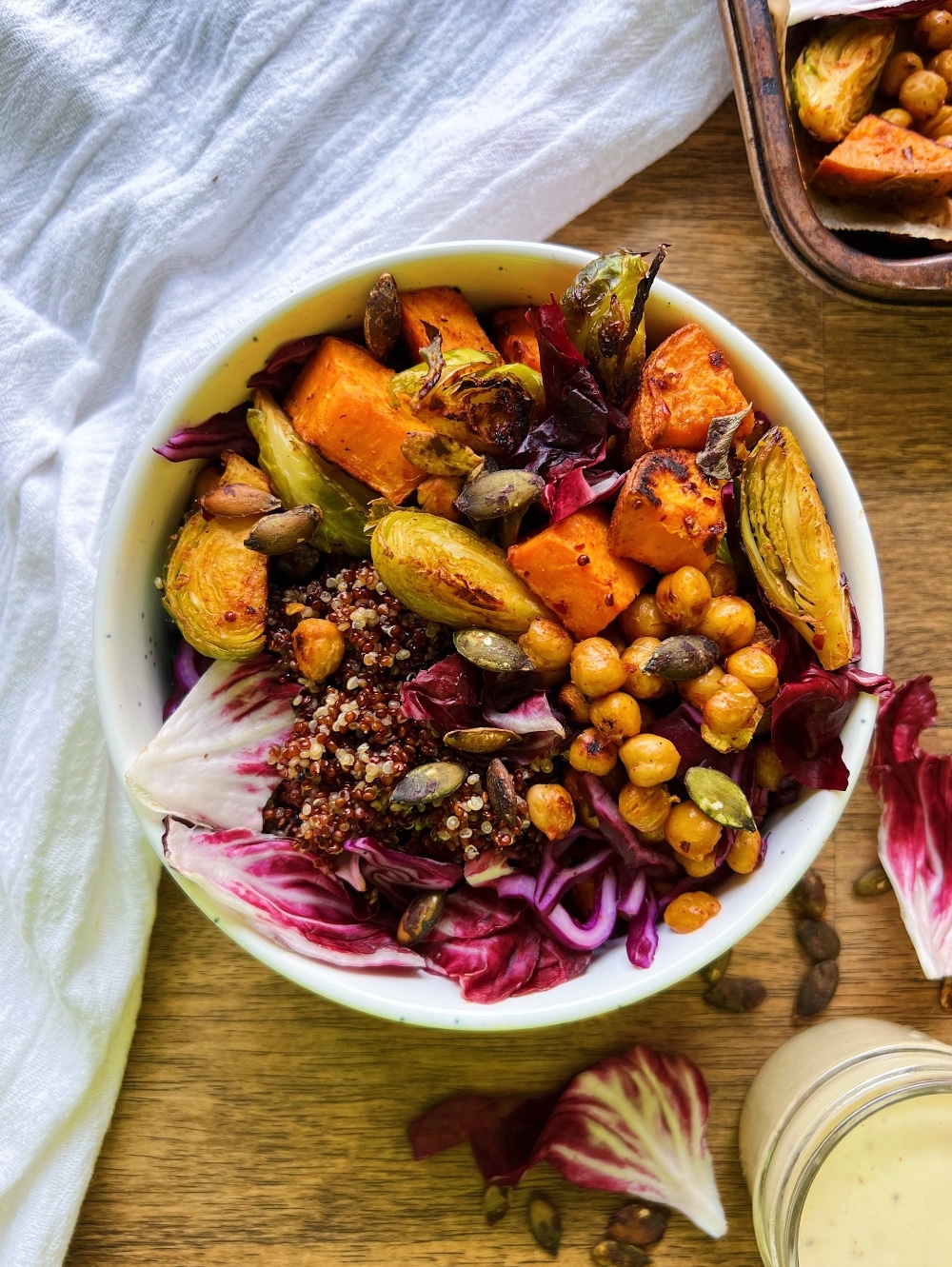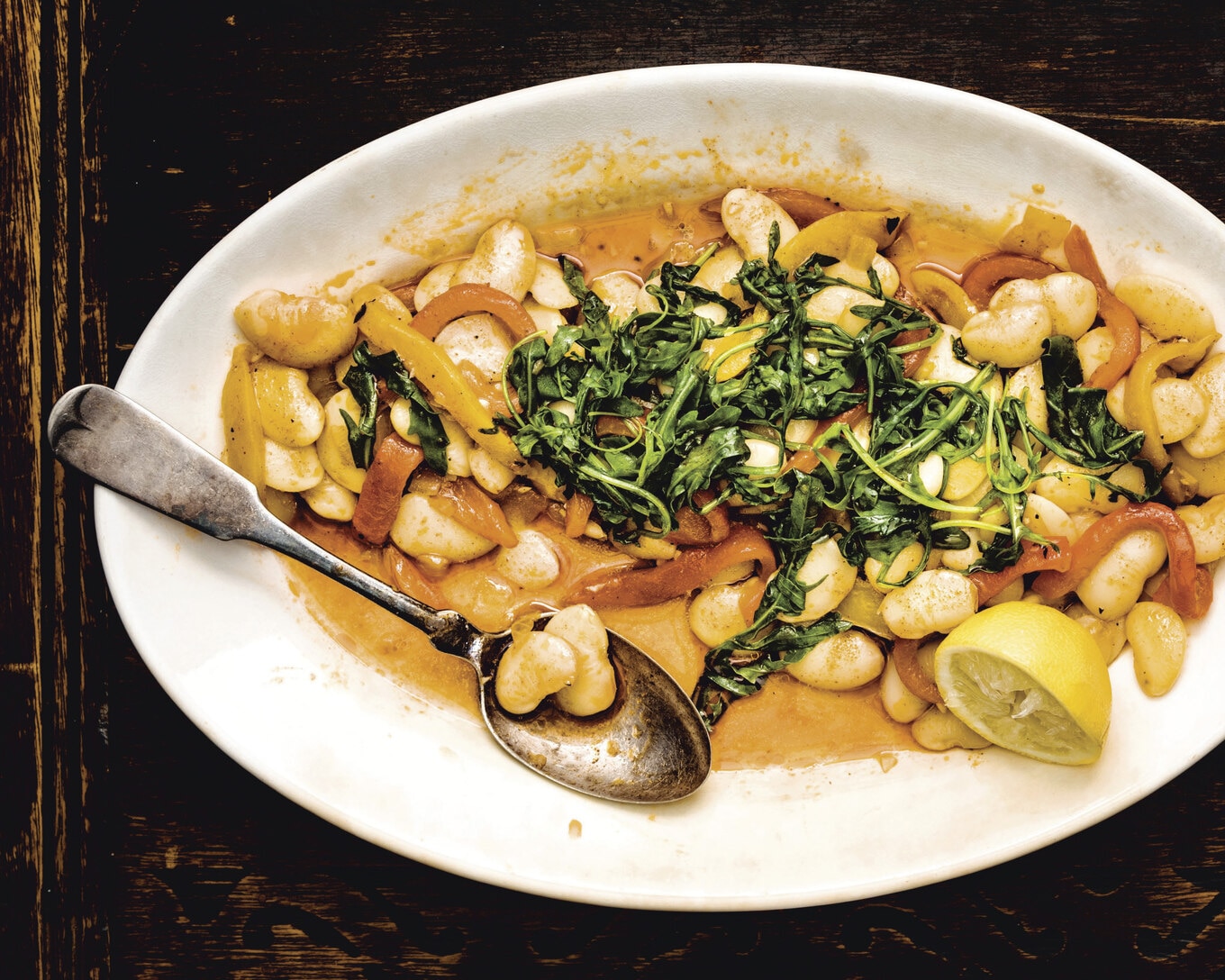
You’re a Winter Salad Eater Now: 20 Recipes that Make it the Star of the Table
Bulk up your bowl with these easy steps for turning your meal from simple to superb.
January 10, 2025
The old stereotype about vegans only eating lettuce and tofu is far from accurate, but hey, most of us do love a good salad. The satisfying crunch of lettuce and veggies is refreshing and wholesome, but to bring your salad from drab to fab (yes, this expression may have been lifted from reality television makeover shows) it will need an extra punch of flavor, texture, and overall oomph.
Should you eat salad in winter?
Salads are often thought of as a summer dish, but there’s no reason why you can’t enjoy them in the colder months, too. In fact, eating a variety of salads during the winter is arguably beneficial.
Not only do salads provide a refreshing contrast to heavier, heartier winter dishes, like casseroles and stews, for example, but they also contribute important nutrients to your diet.
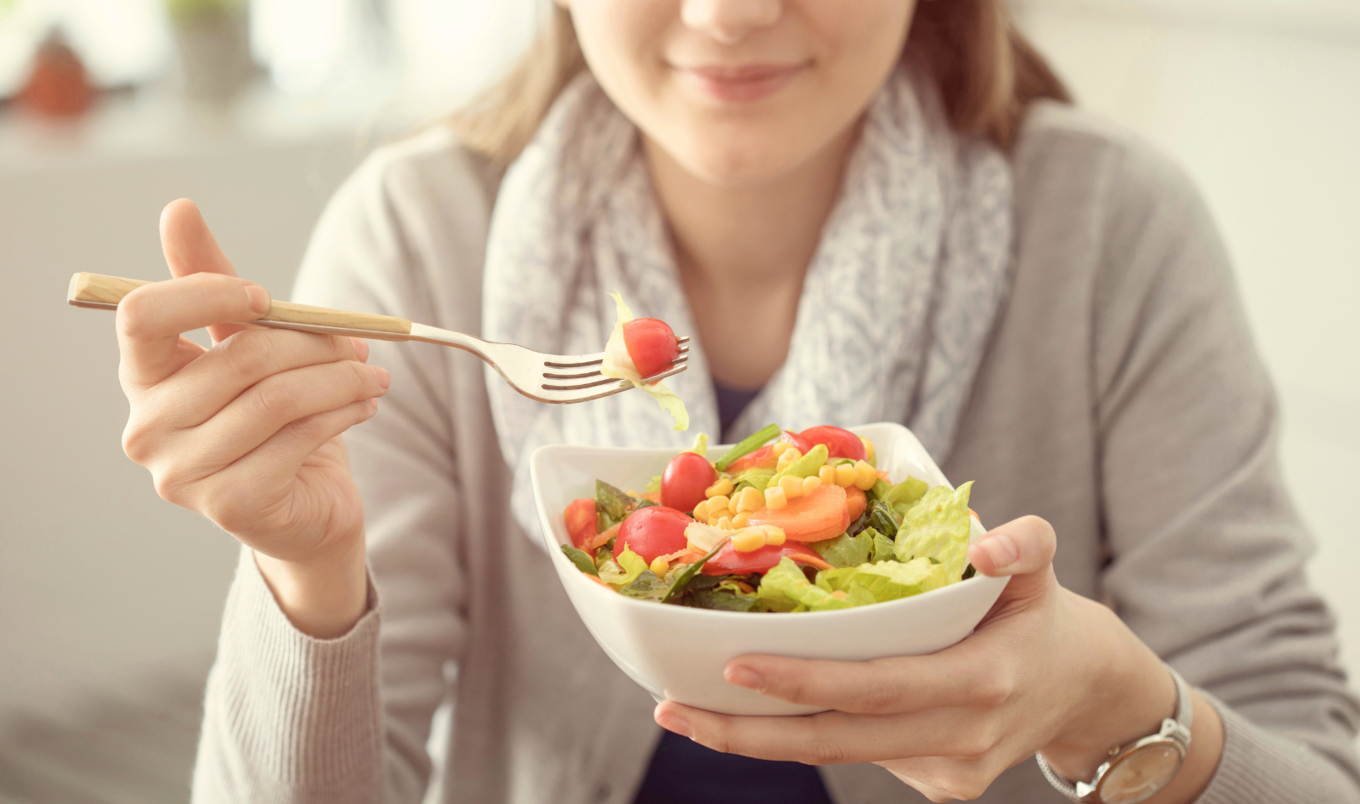
According to a study published in Public Health Nutrition, “incorporating more salads in the diet is one effective strategy […] to augment vegetable consumption and adherence to dietary recommendations concerning vegetables.” Given that only one in 10 US adults consume enough fruits and vegetables, salads are a great way to meet your daily quota.
Winter vegetables like sweet potatoes, beets, and carrots are great salad ingredients, and they’re all packed with essential vitamins and minerals, as well as potent antioxidants.
But that said, salad can be just as comforting as many other winter dishes. They can be served warm, for example, and filled with roasted vegetables, as well as satisfying carbohydrates like pasta and croutons.
Want to learn more about how to make a delicious vegan winter salad? Check out our 20 tips below.
How to make better vegan salads
Here are our top tips for turning a sad salad into a power-packed, plant-based meal.
BECOME A VEGNEWS VIP: Get exclusive product deals, freebies, and perks galore!
1 Love your lettuce
Instead of yawning over iceberg, mix it up with mache, watercress, frisée, spinach, mixed greens, arugula, butter lettuce, or romaine hearts for a slightly different spin. Mix and match varieties until you achieve the perfect base for a satisfying salad.
Try it in a recipe: Vegan Warm Lentil, Sweet Potato, and Arugula Salad
2 Add grains
Quinoa is an excellent choice because of its small size, allowing it to cling to the other components in your salad and not just pool sadly at the bottom of your bowl. Quinoa is also high in nutritional value, but feel free to experiment with wheat berries, brown rice, millet, bulgur, or couscous. Name a grain—it can go in your salad.
Try it in a recipe: Easy Vegan Bulgur Tabbouleh Salad
3 Don’t skimp on veggies
Rather than settling for a few forlorn slices of carrot or celery, think grilled fennel, steamed asparagus, marinated mushrooms, or pickled daikon. Add a heaping dollop of mashed potatoes for a taste of comfort, or braised eggplant, beets, or zucchini to add both bulk and beauty.
Try it in a recipe: Vegan Grilled Eggplant and Zucchini Vegetable Salad
4 Fill up on fruit
Packed with nutrients and low on calories, fruit is a major mainstay of any plant-based diet. While dried cranberries are a staple of mundane packaged salads everywhere, fresh fruit can add sweet pizzazz to an otherwise savory array. Sliced pears, diced apples, ripe berries, and citrus wedges all happily take to a dash of vinaigrette.
Try it in a recipe: Vegan Shaved Fennel and Pink Grapefruit Salad With Cashew Dill Yogurt Dressing
5 Go nuts
As you probably know, nuts are a great source of protein and healthy fats, making them a thoughtful addition to any vegan diet. Slivered almonds, crushed cashews, candied pecans, and whole hazelnuts can all add a healthful crunch to your creation.
Try it in a recipe: Vegan Koshimbir With Roasted Cashews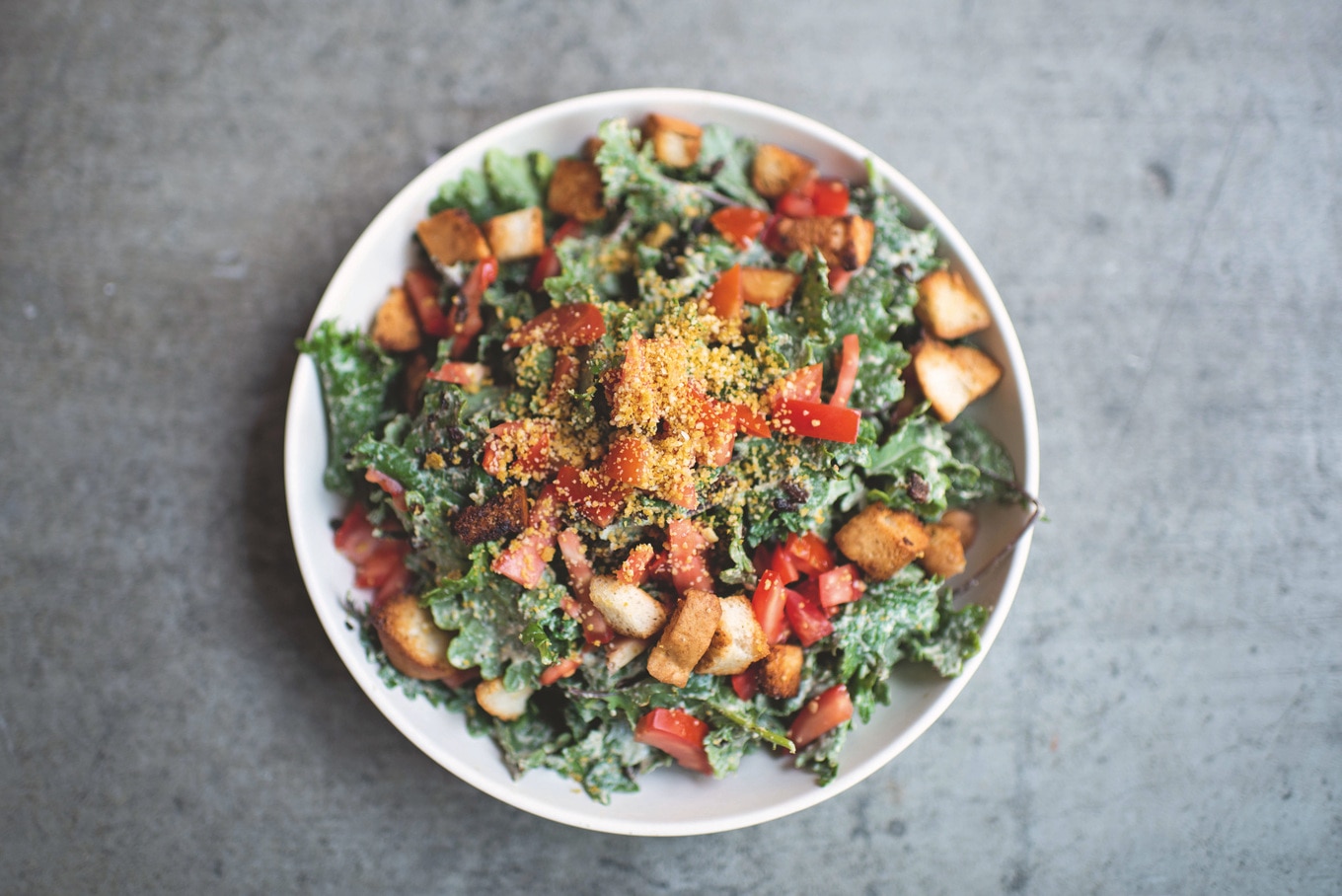
6 Pick a protein
Tofu and tempeh tend to be go-tos, but wheat-based strips, meatless turkey slices, and breaded “chicken” fingers also make excellent stand-ins. And if you were a bacon lover in a former (read: pre-veg) life, don’t forget that many brands of bacon bits are actually vegan. Just check the label to make sure that they’re cruelty-free, and shake it up.
Try it in a recipe: Tangy Vegan Farmhouse Caesar Salad
7 Choose a cheese
Think that being vegan means forgetting about a sprinkle of cheese on top of your salad? Think again! Vegan feta can be tossed with basically anything, or use store-bought shreds to add a creamy, crave-worthy flavor.
Try it in a recipe: Vegan Greek Potato Feta Salad
8 Add avocado
This step is simple. Acquire an avocado. Slice it in half. Remove the pit. Slice the green part into medium-sized pieces. Put the pieces in your salad. Your salad is now 1,000 times better.
Try it in a recipe: Healthy Vegan Avocado-Papaya “Salmon” Salad
9Beans are your friend
Don’t forget about our ol’ pals kidney, edamame, black-eyed, and garbanzo. Whether you have the time to cook them yourself or you opt to go canned, beans are our sometimes forgotten friends! They’re here to give us fiber and make salads taste extra good. Lentils are another wholesome member of the legume family and are one of the most protein-packed plants out there. Pile them on top of your greens and veggies for an ideal power meal.
Try it in a recipe: Meal-Prep Southwest Salad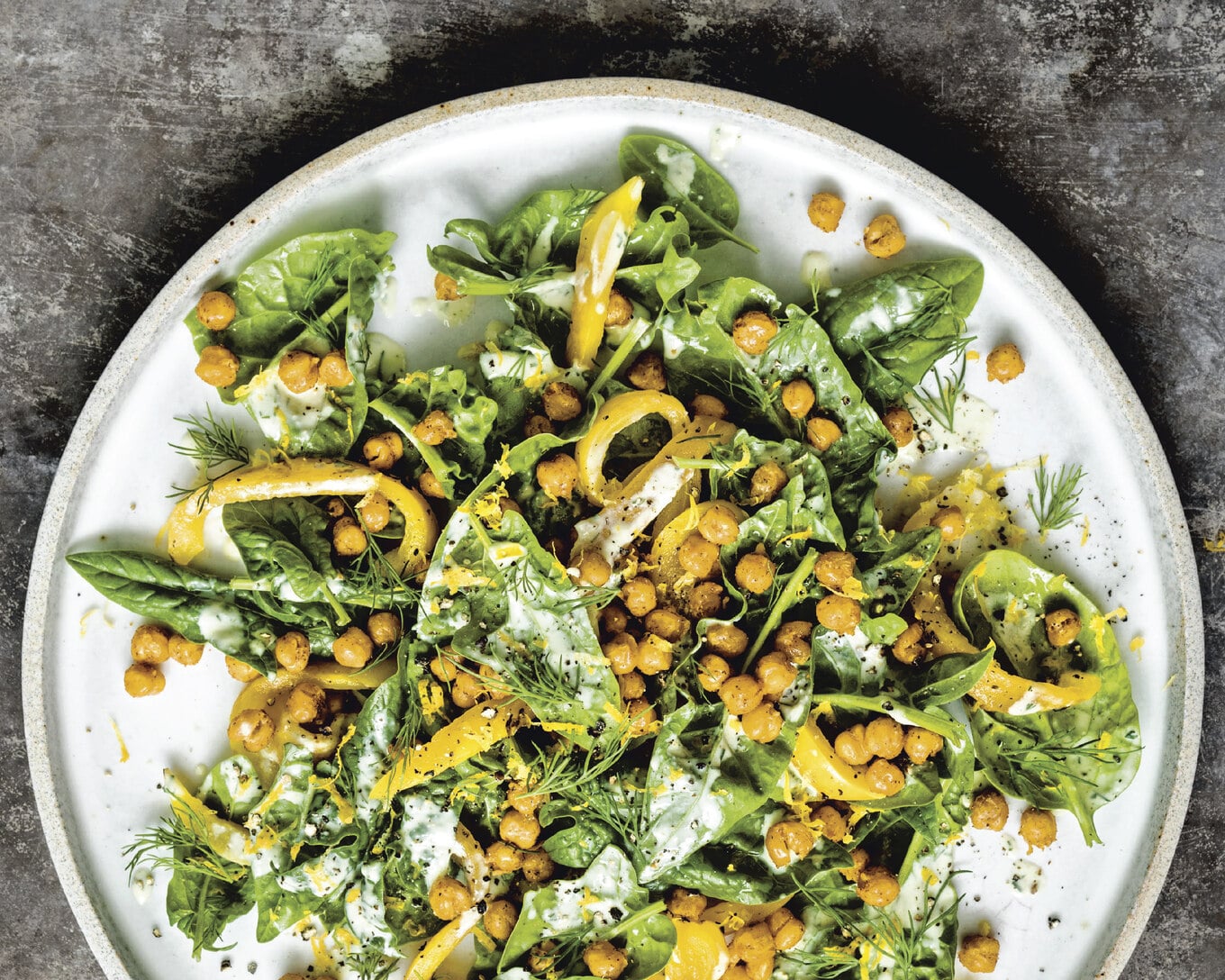
10 Spice it up
Don’t forget that just like any other dish, your salad can be seasoned with fresh or dried herbs and spices. Chop up some basil, cilantro, dill, or tarragon, or add generous dashes of smoked pepper, cayenne, puréed jalapeño, or caramelized onions.
Try it in a recipe: Zesty Vegan Spinach Salad With Blackened Chickpeas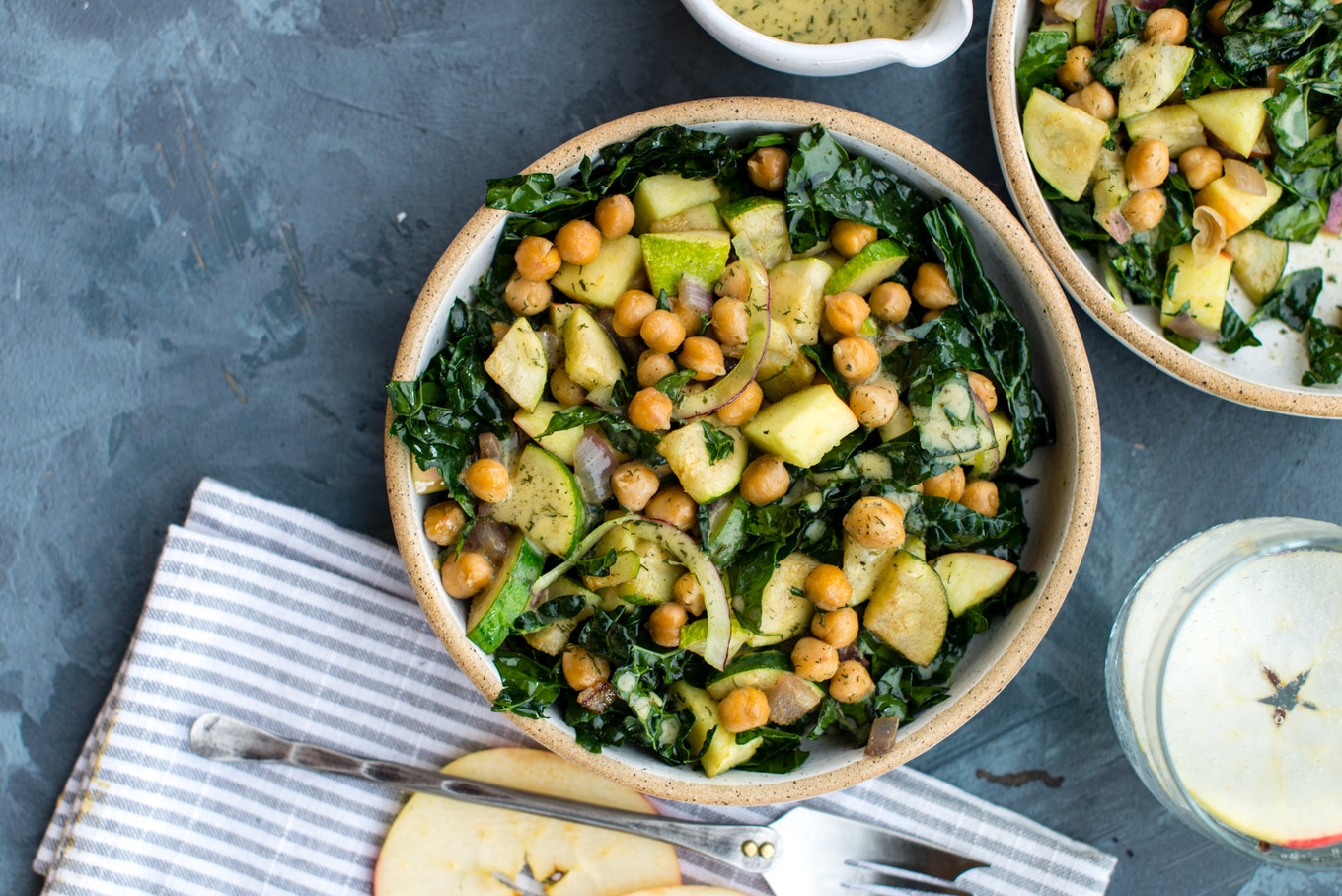
11 Dress to impress
Store-bought dressings are fine and all, but there’s nothing like homemade salad dressing to top off your now jam-packed bowl of show-stopping wonderment. Start with your oil of choice—olive is always a classic, but grapeseed, linseed, or sesame oil can also work—and stir in balsamic or apple cider vinegar, Dijon mustard, fresh herbs, lemon juice, or whatever else your heart desires. To achieve an extra-smooth texture, use a blender, and feel free to add shallots, peppers, capers, or even nut butter depending on what essence you’re looking for.
Try it in a recipe: Vegan Apple-Chickpea Kale Salad With Mustard-Dill Dressing
12Add an extra crunch
Crunch is essential in a salad. It enhances both the texture and overall eating experience, making the dish more satisfying, balanced, and memorable. There are many ways to add extra crunch. Try roasted chickpeas, for example, homemade croutons, or even coconut bacon.
Try it in a recipe: Warm Brussels Sprouts Salad With Coconut Bacon
13 Turn summer classics into winter favorites
Greek salads are usually enjoyed in the spring or summer, but they are just as tasty in the winter, too. Try adding more winter vegetables to the mix, like cauliflower, for example. If you want more warmth, you could even roast it, too. Roasted sweet potato is another winter vegetable that would work well in a Greek salad.
Try it in a recipe: Easy Vegan Greek Cauliflower Salad
14 Keep it colorful
Color in a salad is more than just pretty presentation—it’s also essential for making the dish more appealing, nutritious, and satisfying. Some of the most vibrant ingredients are also the most nutrient-dense, like beets and sweet potatoes, for example.
Try it in a recipe: Vegan Jamaican Beet and Feta Panzanella Salad
15Infuse Thai flavors
Thai salads often incorporate crunchy, fresh vegetables like cabbage, carrots, and cucumber, which are perfect salad ingredients. Traditional ingredients like soy sauce, fresh ginger, and vegan fish sauce also help to add a depth of flavor to your plate of veg.
Try it in a recipe: Vegan Rainbow Thai Cashew Salad
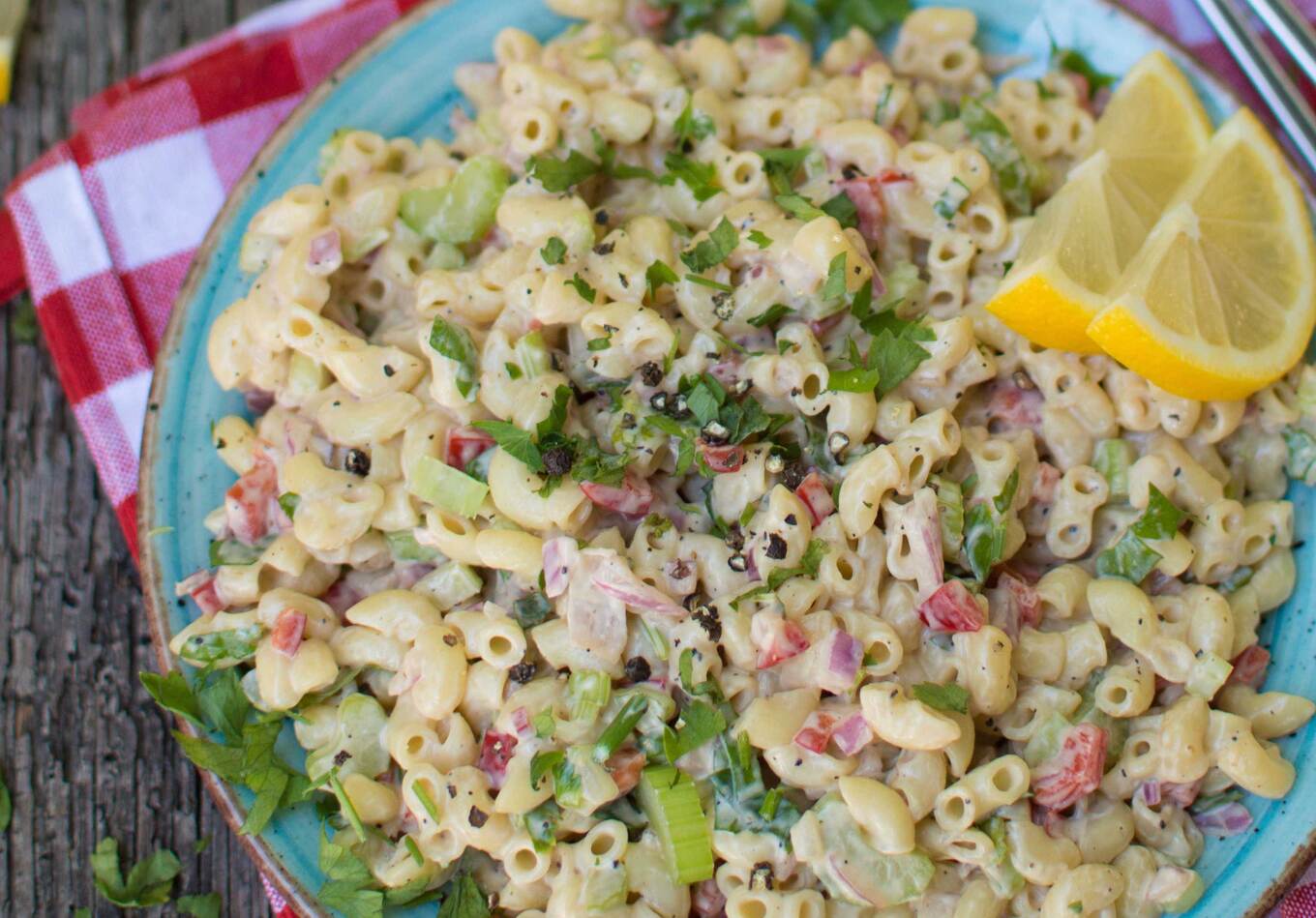 Zhoro Apostolov and Michelle Cehn
Zhoro Apostolov and Michelle Cehn
16 Mix in some pasta
Adding some pasta to your salad can make it more satisfying, substantial, and more filling, but it also adds a nice texture contrast, too. Plus, the addition of carbohydrates can also help to give you long-lasting energy.
Try it in a recipe: Easy Vegan Pasta Salad With Creamy Mustard Dressing
17Go heavy on the garlic
Garlic has a strong, savory, and umami flavor that can elevate even the simplest salad, but it’s also healthy, too. It contains antioxidants, vitamins, and minerals, and it’s associated with supporting heart and digestive health.
Try it in a recipe: Chickpea Salad With Lemon Garlic Vinaigrette
18 Add mushrooms for umami
Adding mushrooms to a salad brings earthy, umami-rich flavor and an array of textures that can make the dish more satisfying and interesting. For more concentrated flavor, cook the mushrooms first before mixing them with your favorite ingredients.
Try it in a recipe: Warm Mushroom Salad With Miso Dressing
19 Keep it sweet
Adding a sweet ingredient to your salad, like maple syrup, for example, can help to balance out other ingredients (like acidic lemon or vinegar, for example) and create a harmonious flavor profile. Agave syrup or coconut nectar would also work well in winter salads.
Try it in a recipe: Warm Winter Vegan Salad with Maple Dijon Dressing
20 Embrace oils
When added to a salad, oils help to distribute flavors evenly across the ingredients, ensuring that every bite is just as good as the last. They also add nutrition (olive oil, for example, is rich in healthy fats) as well as unique flavor (chili oil or pili pili oil have a spicy kick).
Try it in a recipe: Vegan Warm Butter Bean Salad With Roasted Bell Peppers and Pili Pili Oil
For more on tasty, nutritious recipes, read:
JUMP TO ... Latest News | Recipes | Guides | Health | Subscribe
Here at VegNews, we live and breathe the plant-based lifestyle, and only recommend products we feel make our lives amazing. Occasionally, articles may include shopping links where we might earn a small commission, but in no way does this effect the editorial integrity of VegNews.

